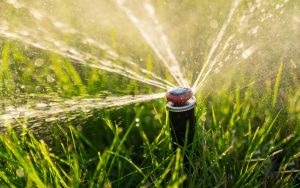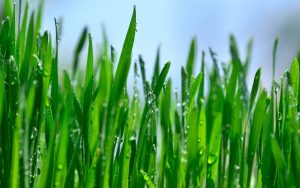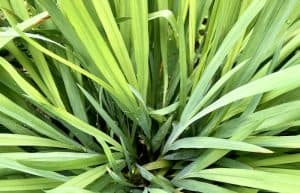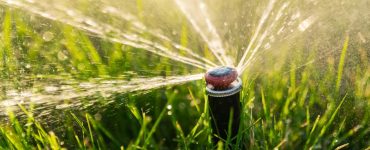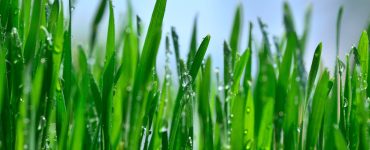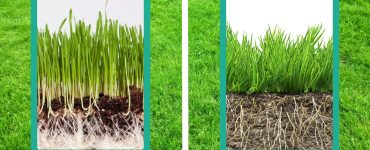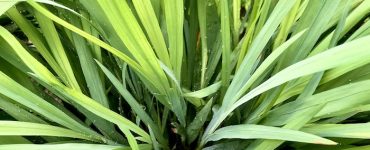Wheatgrass is a fantastic addition to any lawn, offering numerous benefits such as improved soil health and enhanced aesthetics. However, achieving lush and thriving wheatgrass requires careful attention and avoiding some common pitfalls.

In this comprehensive guide, we will delve into the crucial do’s and don’ts of growing wheatgrass for your lawn. Whether you are a seasoned gardener or a beginner, our aim is to equip you with the knowledge and insights needed to cultivate a vibrant and healthy wheatgrass lawn.
Mistake #1: Overwatering
Understanding the Pitfalls of Overwatering
One of the most common mistakes that lawn owners make when growing wheatgrass is overwatering. It may seem counterintuitive, but too much water can actually be detrimental to the health of your wheatgrass. While water is essential for plant growth, excessive moisture can lead to a host of issues that hinder the development of a thriving lawn.
The Consequences of Overwatering
When you overwater your wheatgrass, the soil becomes excessively saturated, leaving little room for air to circulate around the roots. As a result, the roots may start to rot, leading to a condition known as root rot. This can severely weaken the wheatgrass, making it more susceptible to diseases and pest infestations.
Furthermore, overwatering creates a favorable environment for the growth of fungi, such as mold and mildew. These fungal diseases can quickly spread and cause unsightly patches on your lawn, diminishing its visual appeal. Additionally, an overly wet lawn can attract pests, like mosquitoes, that breed in standing water, further exacerbating the problem.

Determining the Right Watering Schedule
The key to avoiding overwatering is to establish a proper watering schedule that meets the needs of your wheatgrass while preventing waterlogged conditions. Several factors should be taken into consideration, such as the climate in your region, the type of soil in your lawn, and the age of the wheatgrass.
During hot and dry periods, you may need to water more frequently, while cooler and wetter climates may require less frequent watering. Sandy soils tend to drain water quickly, necessitating more frequent irrigation, while clay soils retain moisture for longer, necessitating less frequent watering.
Watering Techniques to Prevent Overwatering
To prevent overwatering, consider using a soaker hose or drip irrigation system instead of overhead sprinklers. These methods deliver water directly to the soil around the roots, minimizing water waste and reducing the risk of foliage diseases caused by wet leaves.
It’s also essential to water your lawn in the early morning or late afternoon when the temperatures are cooler. This allows the water to be absorbed by the soil and taken up by the wheatgrass before evaporation occurs during the heat of the day.
Mistake #2: Poor Soil Preparation
The Importance of Proper Soil Preparation
One critical factor that significantly influences the success of growing wheatgrass for lawns is proper soil preparation. Neglecting this essential step can lead to subpar results and hinder the overall health and growth of your wheatgrass. Adequate soil preparation sets the foundation for a thriving lawn and ensures that the wheatgrass receives the necessary nutrients and conditions to flourish.
Common Soil Preparation Mistakes to Avoid
One of the most common mistakes is inadequate tilling or loosening of the soil before planting wheatgrass seeds. When the soil is compacted or hard, it becomes difficult for the roots to penetrate, hindering their growth and access to vital nutrients. This can result in weak and shallow root systems, making the wheatgrass more susceptible to stress, disease, and drought.
Another mistake to avoid is failing to remove rocks, debris, and weeds from the soil before planting. These unwanted elements can impede the growth of wheatgrass and create an uneven and unsightly lawn. Weeds, if not removed, will compete with the wheatgrass for nutrients and space, potentially overtaking your lawn and reducing its aesthetic appeal.
Improving Soil Fertility and Drainage
To ensure your wheatgrass lawn thrives, it’s crucial to amend the soil with organic matter and nutrients. Adding compost, well-rotted manure, or other organic materials helps improve soil structure, increases nutrient content, and enhances water retention. This creates a more fertile environment that promotes robust growth and overall health of the wheatgrass.

Furthermore, good soil drainage is vital to prevent waterlogged conditions that can lead to root rot and other water-related issues. If your lawn has drainage problems, consider incorporating materials like sand or perlite into the soil to improve its drainage capacity.
Testing and Adjusting Soil pH
Before planting wheatgrass, it’s advisable to conduct a soil pH test. Wheatgrass prefers a slightly alkaline soil with a pH range of 6.5 to 7.5. If the soil pH is too acidic or alkaline, it can negatively impact nutrient availability and hinder wheatgrass growth. Based on the test results, you may need to adjust the pH by adding lime to raise it or sulfur to lower it.
Properly Preparing the Seedbed
To create an ideal seedbed, make sure to rake and level the soil after amending it with organic matter and adjusting the pH. A smooth and even surface provides an optimal environment for uniform seed distribution and germination.
Mistake #3: Incorrect Seeding Depth
Understanding the Importance of Seeding Depth
Achieving the right seeding depth is a crucial aspect of successfully growing wheatgrass for lawns. The depth at which you plant the seeds directly affects germination rates and the development of strong, healthy roots. Planting the seeds too deep or too shallow can lead to uneven growth, poor establishment, and reduced overall lawn density.
The Problems with Planting Too Deep or Too Shallow
Planting wheatgrass seeds too deep in the soil can hinder germination, as the seeds may struggle to reach the soil surface. They require sufficient access to light and warmth for successful sprouting. Deeply buried seeds may also encounter difficulty obtaining essential nutrients and moisture, leading to weak and stunted seedlings.
On the other hand, planting the seeds too shallow can leave them exposed to the elements, making them susceptible to drying out or being washed away by heavy rain. Insufficient soil coverage can also make the seeds more accessible to birds and other pests, reducing the overall seed survival rate.
Determining the Ideal Seeding Depth
The optimal seeding depth for wheatgrass depends on various factors, such as soil type and climate conditions. As a general guideline, the seeds should be planted at a depth of approximately 1/4 to 1/2 inch. In sandy soils, it’s best to lean towards the deeper end of the range, while in heavy clay soils, the shallower end may be more appropriate.

Techniques for Achieving Consistent Seeding Depth
To ensure a uniform distribution of seeds and achieve the correct seeding depth, consider using a broadcast spreader or a hand spreader for smaller areas. These tools help evenly distribute the seeds over the soil surface, reducing the chances of clumping and ensuring consistent coverage.
After spreading the seeds, gently rake the soil to incorporate them into the top layer, adhering to the recommended seeding depth. Raking also aids in creating good seed-to-soil contact, promoting successful germination and establishment.
Covering the Seeds Properly
Once the seeds are raked into the soil, it’s essential to cover them adequately to protect them from birds, wind, and excessive sunlight. Using a thin layer of topsoil or compost as a light covering helps shield the seeds while still allowing them access to light and air.
Mistake #4: Neglecting Sunlight Requirements
The Importance of Sunlight for Wheatgrass Growth
Sunlight plays a crucial role in the growth and vitality of wheatgrass. As with most plants, wheatgrass relies on sunlight to undergo photosynthesis, the process by which it converts light energy into essential nutrients. Neglecting the sunlight requirements of your wheatgrass can lead to weak and spindly growth, reduced chlorophyll production, and an overall unhealthy lawn.
Recognizing the Signs of Insufficient Sunlight
One of the primary signs of insufficient sunlight is the yellowing of the wheatgrass blades. When wheatgrass doesn’t receive enough sunlight, it cannot produce enough chlorophyll, which is responsible for its green color. As a result, the blades may turn yellow, indicating a lack of essential nutrients and energy production.
In addition to yellowing, the wheatgrass may also exhibit stunted growth and become thinner and less dense than it should be. When deprived of adequate sunlight, the grass cannot photosynthesize efficiently, which impacts its ability to generate energy for growth and maintenance.
Optimizing Sun Exposure in Different Lawn Environments
The amount of sunlight required for optimal wheatgrass growth can vary depending on your lawn’s specific conditions. While wheatgrass generally prefers full sun, it can tolerate partial shade to some extent. However, to achieve the healthiest and most robust growth, aim to provide at least 6 to 8 hours of direct sunlight daily.
If your lawn has areas that receive limited sunlight due to structures or trees, consider pruning or trimming the vegetation to allow more sunlight to reach the wheatgrass. Additionally, avoid planting wheatgrass in areas with heavy shade or where it is consistently shaded throughout the day, as this can impede its growth.

Adjusting Sun Exposure Throughout the Day
To maximize the benefits of sunlight, time your watering and mowing routines appropriately. Watering your wheatgrass in the early morning or late afternoon ensures it can absorb the moisture before the hottest part of the day. This minimizes water loss due to evaporation and optimizes the availability of water for the grass.
Furthermore, avoid mowing during the hottest part of the day when the sun is at its peak. Mowing in the early morning or late afternoon prevents the grass from being stressed by the combination of intense heat and freshly cut blades.
Sunlight and Overall Lawn Aesthetics
Beyond its impact on wheatgrass growth, proper sunlight exposure enhances the overall aesthetics of your lawn. A well-lit lawn with healthy, green wheatgrass becomes a vibrant and inviting outdoor space. On the other hand, a lawn struggling with inadequate sunlight may appear lackluster and unattractive.
Mistake #5: Ignoring Proper Mowing Practices
The Importance of Mowing for Wheatgrass Lawns
Proper mowing practices are essential for maintaining the health and appearance of your wheatgrass lawn. Mowing not only controls the height of the grass but also promotes lateral growth, leading to a thick and lush lawn. Neglecting the correct mowing techniques can result in weakened wheatgrass, increased vulnerability to pests and diseases, and an overall unattractive landscape.
Why Improper Mowing is Detrimental
One of the common mistakes is cutting the wheatgrass too short, known as “scalping.” Scalping removes too much of the grass blade, exposing the crown and stunting its growth. This weakens the wheatgrass and makes it more susceptible to stress, pests, and disease.
Conversely, allowing the wheatgrass to grow excessively tall before mowing can also be detrimental. Overgrown grass may become leggy and flop over, reducing sunlight exposure to the lower parts of the plant. This can lead to thinning and less dense growth, negatively impacting the overall aesthetics of your lawn.

Best Practices for Mowing Wheatgrass
To avoid the pitfalls of improper mowing, it’s essential to follow best practices for maintaining your wheatgrass lawn.
- Set the Mower Height Correctly: Adjust your mower to a height that ensures only about one-third of the grass blade is cut during each mowing session. For most wheatgrass varieties, a mowing height of around 2.5 to 3.5 inches is ideal. Maintaining this height encourages deep root growth and a more resilient lawn.
- Regular Mowing Schedule: Establish a regular mowing schedule, especially during the growing season. Frequent mowing prevents the grass from becoming too tall and helps maintain an even height across the lawn.
- Use Sharp Mower Blades: Dull mower blades tear the grass rather than providing a clean cut. This can cause stress and leave the grass susceptible to diseases. Ensure your mower blades are sharp to achieve a clean cut, promoting faster healing and healthier growth.
- Alternate Mowing Patterns: Vary your mowing direction with each session. Alternating mowing patterns helps prevent the grass from leaning in one direction and encourages more upright and even growth.
- Avoid Mowing in Wet Conditions: Mowing wet grass can lead to uneven cutting and may even cause damage to the turf. Aim to mow when the grass is dry to achieve a clean and uniform cut.
- Leave Clippings on the Lawn: If the clippings are short, consider leaving them on the lawn. Grass clippings can act as natural mulch, returning essential nutrients to the soil as they decompose.
- Avoid Heavy Mowing during Stressful Periods: During periods of heat or drought stress, avoid heavy mowing or scalping. Allow the grass to grow slightly taller to provide more shade to the soil and conserve moisture.
Mistake #6: Failing to Address Pests and Diseases
The Threat of Pests and Diseases to Wheatgrass
Pests and diseases pose significant threats to the health and vitality of your wheatgrass lawn. Ignoring or neglecting to address these issues can result in severe damage and even the demise of your grass. While wheatgrass is generally resilient, it is not immune to the attacks of pests or the spread of diseases. Being proactive in identifying and dealing with these challenges is essential to maintaining a thriving and beautiful lawn.
Identifying Common Pests and Diseases
Familiarizing yourself with common wheatgrass pests and diseases is the first step in effective management. Some common pests that may affect wheatgrass include chinch bugs, armyworms, sod webworms, and white grubs. These pests feed on the grass blades, leading to brown patches and weakened turf.
Diseases that can afflict wheatgrass include dollar spot, brown patch, rust, and fusarium blight. These diseases manifest as discolored or dead patches, irregular growth patterns, and overall weakening of the grass.
The Dangers of Ignoring Pests and Diseases
If left unchecked, pests and diseases can rapidly spread throughout your lawn, causing extensive damage and requiring more aggressive treatment measures. Ignoring the early signs of infestations or infections can lead to more significant financial and time investments in resolving the issues later.

Moreover, weakened or damaged wheatgrass becomes more vulnerable to other stresses, such as drought and extreme temperatures. This can further exacerbate the condition of your lawn, leading to a vicious cycle of decline.
Organic and Chemical-Free Pest and Disease Control
When it comes to addressing pests and diseases, consider adopting organic and chemical-free approaches whenever possible. Chemical pesticides and fungicides may harm beneficial organisms and have adverse effects on the environment. Instead, explore natural alternatives, such as neem oil, garlic spray, or beneficial nematodes, to control pests without harming the ecosystem.
Improving overall lawn health through proper cultural practices, such as appropriate watering, fertilization, and mowing, can also help wheatgrass withstand pest and disease pressures. Healthy grass is better equipped to resist attacks and recover from any potential damage.
Seeking Professional Help when Necessary
If you encounter severe or persistent pest and disease issues, it is wise to seek the assistance of a professional lawn care service or an experienced horticulturist. They can accurately diagnose the problems and recommend targeted solutions for effective control.
Mistake #7: Disregarding Seasonal Care
Understanding the Importance of Seasonal Care
Seasonal care is a vital aspect of maintaining a healthy and thriving wheatgrass lawn throughout the year. Each season presents unique challenges and requirements that must be addressed to ensure the long-term success of your lawn. Disregarding these seasonal considerations can lead to stress on the grass, reduced growth, and a less attractive landscape.
Spring Care: A Time for Renewal
As spring arrives, your wheatgrass lawn emerges from its winter dormancy. Spring is a critical time for rejuvenation and growth. To kickstart the growing season, focus on tasks like fertilization, aeration, and overseeding if needed. Applying a balanced fertilizer rich in nitrogen helps promote vigorous growth, while aeration improves soil compaction, allowing for better nutrient and water absorption.
Summer Care: Surviving the Heat
Summer brings with it higher temperatures and increased water requirements. Providing adequate irrigation is crucial during this period, especially in hot and dry climates. Adjust your watering schedule based on weather conditions to prevent drought stress while avoiding overwatering.
Mowing is also essential in the summer. Maintain the recommended mowing height to shade the soil and help conserve moisture. Consider leaving grass clippings on the lawn to act as natural mulch, providing additional protection from the sun’s intense rays.

Fall Care: Preparing for Winter
Fall is a critical season for preparing your lawn to withstand the upcoming winter. Continue mowing, but gradually lower the cutting height as the grass slows down its growth. This helps prevent snow mold and other diseases during the colder months.
Fall is also an excellent time for overseeding any thin or damaged areas in your lawn. The cooler temperatures and ample moisture create optimal conditions for new seedlings to establish before winter sets in.
Winter Care: Dormancy and Protection
During winter, your wheatgrass lawn enters a state of dormancy. Growth slows down, and the grass becomes less active. While mowing is less frequent during this time, it is essential to keep the lawn free of debris and fallen leaves, which can smother the grass and promote disease.
Additionally, consider snow removal techniques that protect the grass beneath. Avoid using salt or chemical deicers near the lawn, as these can harm the grass and soil when they melt.
Year-Round Observations and Adjustments
Throughout the year, observe your lawn’s condition regularly. Pay attention to changes in color, density, and overall health. Adjust your care routine accordingly, applying appropriate treatments as needed.
Conclusion
By steering clear of common mistakes like overwatering, neglecting sunlight, and improper mowing, you are already on your way to success. Remember, successful wheatgrass growth is a result of careful attention, thoughtful planning, and timely action. By addressing soil preparation, seeding depth, and adopting proper mowing practices, you can create an environment where wheatgrass thrives and complements your lawn’s overall appeal.


